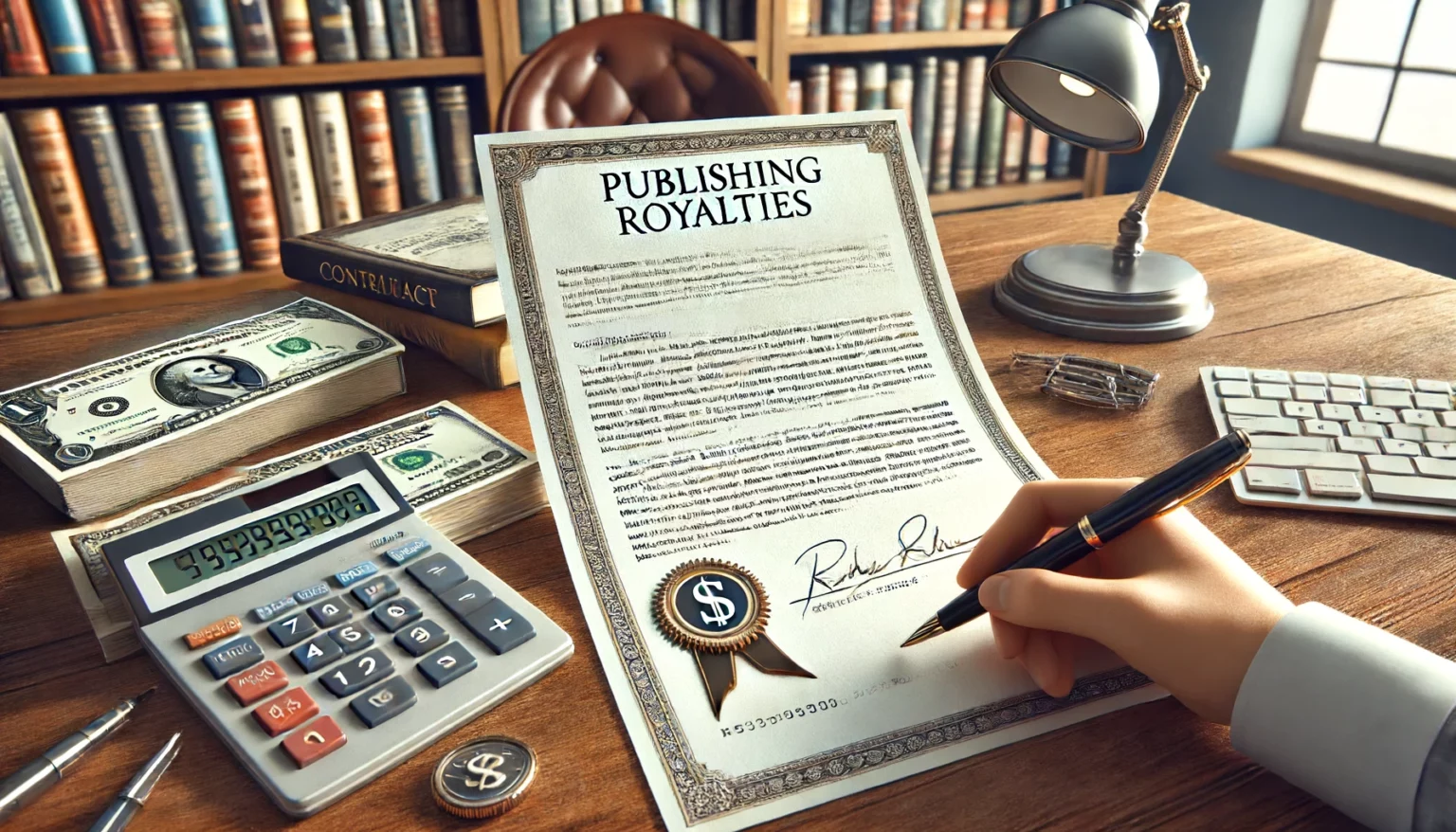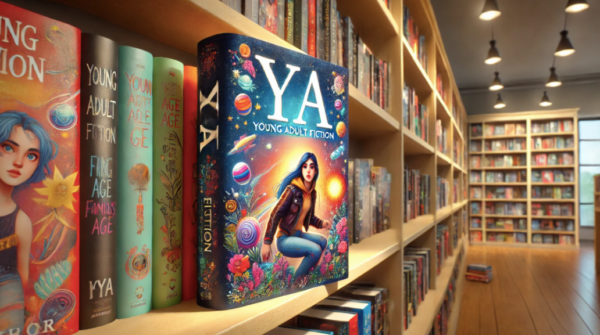Understanding the earnings of authors per book is a complex puzzle influenced by numerous factors, from the choice of publishing route to the author’s market reach. Authors can embark on their literary journey through traditional publishing, where a publishing house takes the helm, offering advances and royalties but often requiring the support of literary agents. Alternatively, they may choose the self-publishing route, which offers higher royalties per book and more control over the publishing process, albeit with increased responsibilities and upfront costs. This exploration delves into the financial landscapes of both traditionally published and self-published authors, revealing how much money they can expect to make from each book sold and highlighting the intricacies of each publishing path.
Overview: Understanding Author Book Royalties
Here’s a quick guide to how much authors earn per book, influenced by publishing routes and market reach:
Traditional Publishing
- Advances: Upfront payments ranging from a few thousand to six or seven figures.
- Royalties: Typically 10-15% for hardcovers, 6-8% for paperbacks, and 25-40% for e-books.
- Literary Agents: Take 15-20% commission but can secure better deals.
Self-Publishing
- Higher Royalties: Up to 70% of the retail price.
- Upfront Costs: Authors bear costs for editing, design, and marketing.
- Control and Speed: Faster publishing and complete control over the process.
The Basics of Author Earnings: How Much Do Authors Make?
Authors earn money from their books primarily through advances and royalties, two key financial concepts in the publishing world. An advance is a lump sum paid to the author before the book is published, representing an upfront payment against future royalties. This amount is determined by the publisher’s expectations of the book’s sales potential and can vary widely based on the author’s reputation, the genre, and market trends. Advances are essentially a bet by the publisher on the book’s success, and the author doesn’t earn additional royalties until the published book’s sales surpass the advance amount.
Royalties, on the other hand, are ongoing payments made to the author based on the number of books sold after the advance is “earned out.” These are typically a percentage of the book’s sale price, varying significantly across different publishers and contracts. For traditionally published authors, royalty rates usually range from 10% to 15% for hardcovers and slightly less for paperbacks and ebooks. Self-published authors, bypassing the traditional publisher, often receive higher royalties—sometimes up to 70% of the retail price—due to direct sales channels like Amazon or their websites. Understanding these mechanisms is crucial for authors to gauge their potential earnings and make informed decisions about their publishing routes.
Traditionally Published Authors
The traditional publishing process begins with an author creating a manuscript and either querying literary agents or submitting it directly to publishers that accept unsolicited manuscripts. Literary agents, if involved, play a crucial role in pitching the manuscript to publishers and negotiating contract terms, including advances and royalties. Once a publisher is interested, the author receives an offer that outlines the advance, royalty rates, and other pertinent details.
Advances are pre-paid royalties offered to authors before the book hits the market. The size of an advance can range from a few thousand dollars for new authors to six or seven figures for established bestsellers. This payment is an upfront investment by the publisher in the author’s work and is typically divided into parts—upon signing the contract, after manuscript acceptance, and following publication. The advance must be “earned out” through book sales before the author receives additional royalties.
Royalty rates for traditionally published books vary based on the format and sales channel. Hardcovers often provide authors with 10% to 15% of the list price, increasing after certain sales milestones are reached. Paperbacks usually offer slightly lower rates, around 6% to 8% of the list price. E-books tend to have higher royalty rates, commonly between 25% and 40%, reflecting the lower costs associated with digital distribution.
The entire process, from manuscript acceptance to bookshelf acceptance, can take anywhere from one to two years, during which the publisher manages editing, design, marketing, and distribution. The success of this traditional route largely depends on the publisher’s effort and the market response, influencing how quickly an author’s advance is earned out and the onset of regular royalty payments. This model provides authors with significant support but requires them to navigate the complexities of contracts and market dynamics to maximize their earnings.
The Role of Literary Agents
Literary agents are pivotal in shaping an author’s career and earnings in the traditional publishing world. They leverage their industry knowledge and connections to secure the best possible deals for authors, often negotiating higher advances and better royalty rates. By evaluating and pitching manuscripts to suitable publishers, agents increase the likelihood of a book’s success and maximize its financial returns.
Typically, literary agents receive a standard commission of 15% on domestic sales and around 20% on foreign sales. This percentage is taken from the author’s earnings, including advances, royalties, and any subsidiary rights deals. While this reduces the author’s direct income, the expertise and negotiation skills of an agent often lead to significantly higher overall earnings than what an author might achieve independently. Their role extends beyond financial negotiations, often guiding career decisions and ensuring contractual fairness for authors.
Self-Published Authors
The self-publishing route offers authors complete control over their literary work, from writing and editing to marketing and distribution. This approach to creative writing has gained significant traction with the rise of digital platforms like Spines, Amazon’s Kindle Direct Publishing, Smashwords, and others that facilitate easy access to the market. Self-publishing allows authors to bypass traditional gatekeepers, meaning they can bring their books to market much faster, often within a few months.
Financially, self-published authors can see varied earnings, largely dependent on their marketing efforts, the quality of their work, and their ability to connect with readers. Unlike most traditionally published authors, who receive an advance, self-published authors invest their own money upfront for costs like editing, cover design, and marketing. The return on this investment can be significant due to higher royalty rates—commonly between 40% and 70% of the retail price for digital sales, and less for print-on-demand physical books due to production costs.
The impact of direct sales is profound for self-published authors. By selling directly through online platforms or their websites, they not only increase their profit margins but also gather valuable data about their readership. This direct interaction can lead to more targeted and effective marketing strategies. Additionally, successful self-published authors often build a loyal fan base that helps propel future releases to success through word-of-mouth and social media promotion.
The key to thriving as a self-published author lies in the ability to wear multiple hats—writer, editor, marketer, and entrepreneur. While the potential for higher royalties is enticing, it comes with the challenge of managing the entire publishing process. For those who navigate these waters successfully, self-publishing can be a lucrative and rewarding path, offering creative freedom and a closer relationship with their audience.
Your Publishing Journey Awaits – Start NowFactors Influencing Earnings
An author’s earnings are influenced by several key factors:
- Genre:
- Certain genres, like romance, mystery, and science fiction, have larger and more dedicated readerships, leading to higher sales.
- Timing and market trends affect how well a book performs.
- Market Demand:
- Reader preferences and trends shift over time, impacting book sales.
- Choosing a genre with strong demand can significantly increase earnings.
- Author Reputation:
- Established authors with a proven track record command higher advances and royalties due to name recognition.
- New authors may struggle financially until they build a loyal following.
- Printing Costs:
- Self-published authors using print-on-demand (POD) services face higher costs that reduce net earnings per book.
- These costs must be covered before making a profit.
- Retail Price & Royalties:
- For traditionally published authors, the publisher sets the retail price, affecting earnings per sale.
- Higher retail prices can mean more revenue but must align with market expectations.
Understanding these factors allows authors to plan their publishing approach to maximize their financial return strategically.
The Journey of a First Book
Publishing a debut book is fraught with challenges, yet it offers significant potential for establishing a foothold in the literary world. For new authors, navigating the unfamiliar terrain of the publishing industry can be daunting, with hurdles such as finding a literary agent, securing a publisher, or effectively marketing a self-published title.
For traditionally published debut authors, the journey often involves rigorous manuscript revisions and a long wait for publisher approval. Advances for first-time authors are typically modest, ranging from a few thousand dollars to around $10,000, depending on the genre and market potential. The support from a traditional publisher in editing, design, and marketing can be invaluable, though it means sharing control and accepting lower royalties per book sold.
Self-publishing, on the other hand, allows debut authors to maintain complete control over their work, from the cover design to the marketing strategy. While this route eliminates the barrier of publisher acceptance, it requires significant upfront investment in professional editing, design, and marketing efforts. The potential earnings can be higher due to increased royalties—often 40% to 70% of the retail price—but success heavily depends on the author’s ability to connect with and expand their audience.
Both paths offer unique opportunities and challenges, and the choice largely depends on the author’s goals, resources, and willingness to navigate the complexities of the publishing industry.
The Economics of Subsequent Books
As authors publish more books, their earnings landscape often shifts significantly, reflecting the cumulative effect of their efforts and the growth of their readership. For traditionally published authors, subsequent books can come with larger advances and improved royalty rates if their earlier works have been successful. Publishers are more willing to invest in authors who have demonstrated market appeal and a consistent sales track record.
For self-published authors, the release of subsequent books provides an opportunity to leverage an established fan base. These authors typically see an uptick in sales not only for new releases but also for their backlist titles, as new readers often purchase previous works after discovering a favored author. This phenomenon amplifies overall earnings and helps establish a more stable income stream.
The key to maximizing earnings from subsequent books lies in effectively maintaining and expanding a readership. Engaging with readers through social media, newsletters, and other platforms can create anticipation for new releases. Additionally, refining marketing strategies for writing books based on past successes and failures can lead to more efficient and impactful promotions, enhancing the visibility and sales of each new book. This iterative process builds a more resilient and lucrative career for authors, whether they are traditionally published or self-published.
Your Publishing Journey Awaits – Start NowBestselling Authors vs. Average Authors
The earnings gap between bestselling authors and average, or midlist, authors is stark and illustrative of the broader dynamics within the publishing industry. Bestselling authors like Stephen King exemplify the pinnacle of financial success in this field. King, with his extensive catalog of popular novels, often commands advances in the millions and enjoys high royalty rates, alongside significant earnings from film adaptations and merchandise. His books sell millions of copies globally, ensuring a substantial and consistent income.
In contrast, a midlist author, who might have a dedicated but smaller readership, faces a very different economic reality. Such authors typically receive advances in the lower five figures and depend heavily on royalties from modest sales. For instance, a midlist author might receive an advance of $10,000 to $20,000 and see average sales in the range of 5,000 to 20,000 copies per book. Their earnings are further impacted by standard royalty rates, which are often just enough to make writing a supplementary rather than primary income.
This disparity is even more pronounced in the self-publishing realm. While a bestselling self-published author can achieve significant earnings due to higher royalties and direct sales, most self-published authors struggle to reach a wide audience, often earning less than $1,000 per book without a strategic marketing plan and a stroke of viral success.
This vast difference in earnings highlights the importance of visibility, branding, and market reach in an author’s financial success. It underscores the reality that while a few reach stellar heights, many more navigate the challenges of moderate sales and the need for multiple income streams.
Additional Revenue Streams
Authors can significantly enhance their earnings by tapping into additional revenue streams beyond traditional book sales. Film rights are a particularly lucrative option for those whose stories capture the interest of movie or TV producers. Securing a deal can lead to a large upfront payment plus potential royalties from the adaptation’s success.
Audiobooks have also become a vital income source as their popularity soars. Authors either negotiate separate audiobook deals in their publishing contracts or, if self-published, work directly with platforms like Audible to produce and distribute their titles. This can provide a steady income stream, especially for authors with a series or a strong niche audience.
Merchandise related to a book or series, such as apparel, posters, or collectibles, offers another avenue for revenue. While this is more common for genre fiction with a dedicated fanbase, it can add a meaningful boost to an author’s overall earnings, especially when paired with fan events or special editions. These additional streams not only diversify income but also deepen fan engagement and brand loyalty.
The Digital Shift: E-Books and Online Sales
The rise of e-books has significantly transformed the publishing landscape, offering both challenges and opportunities for authors. This digital shift has enabled faster distribution, wider reach, and the potential for increased earnings due to the lower costs associated with producing and distributing e-books compared to print books.
For authors, e-books often come with higher royalty rates. While traditional print book royalties typically range from 10% to 15% of the retail price, e-book royalties can be substantially higher, often between 25% and 40% when books published are through traditional publishers. For self-published authors, this rate can soar to 60% or 70%, particularly on platforms like Amazon’s Kindle Direct Publishing, where they set their own prices and benefit directly from reduced production and distribution costs.
This shift has also democratized the publishing process, allowing more authors to bypass traditional gatekeepers and traditional publications, and directly reach their audience. However, the competition in the digital space is fierce, and success often hinges on effective online marketing and maintaining a strong digital presence. The higher potential earnings from e-books can be a game-changer for many authors, especially when coupled with strategic pricing and promotional efforts to maximize visibility and sales in the crowded online marketplace.
Indie Authors and Niche Markets
Indie authors have found remarkable success by targeting niche markets, where dedicated and enthusiastic readerships often exist for specific genres like science fiction, fantasy, and romance. These authors leverage their deep understanding of their genre’s conventions and audience preferences to create compelling stories that resonate strongly with their target readers.
A prime example of an indie author flourishing in a niche market is Hugh Howey, who achieved significant success with his “Wool” series in the science fiction genre. Howey utilized online platforms to self-publish all his work initially as a series of e-books, tapping into the growing demand for dystopian narratives. His direct engagement with readers and strategic use of social media helped build a loyal following, leading to impressive sales and eventually lucrative print and film deals.
Similarly, Amanda Hocking is another indie success story in the paranormal romance and fantasy genres. She famously sold over a million copies of her books, primarily through Amazon, before signing any traditional book deal. Her success underscores the potential for indie authors to achieve financial independence and widespread recognition by expertly navigating and capitalizing on the interests of niche markets. These examples illustrate the power of a well-targeted approach combined with quality content and savvy marketing in the digital age.
Your Publishing Journey Awaits – Start NowThe Long-Term Financial Impact
Considering a full-time writing career involves understanding the unpredictable nature of author earnings and the importance of strategic financial planning. For many authors, income from their own book and sales can be irregular, influenced by the timing of releases, fluctuations in market demand, and the occasional windfall from a bestseller or rights deal. Thus, diversifying income streams through teaching, freelance writing, or leveraging additional revenue sources like audiobooks and merchandise is often essential.
Long-term financial planning for authors requires a balance between investing in their craft (such as through workshops and editor services) and ensuring a stable financial foundation with savings and investments to buffer against periods of lower earnings. The realities of a full-time writing career necessitate careful budgeting, continuous learning, and adaptation to market trends, but for those passionate about their work, it offers a uniquely fulfilling professional journey.
Conclusion: The Financial Landscape
The financial landscape for authors is diverse and complex, influenced by factors such as publishing routes, genre, market demand, and individual strategies. Traditionally published authors often navigate the realms of advances and royalties, relying on the support of literary agents, while self-published authors take a more entrepreneurial approach, benefiting from higher royalties but facing significant marketing and distribution challenges. Success in the industry depends not only on writing skills but also on understanding and adapting to market trends, building a readership, and managing financial expectations.
Whether through traditional publishing or self-publishing, authors must consider multiple revenue streams, including digital sales, audiobooks, and merchandise, to sustain their careers. The journey from a debut book to subsequent releases reveals a path of growing earnings potential and the importance of long-term financial planning. Ultimately, while the road to success is unpredictable, the evolving publishing world continues to offer new opportunities for those willing to navigate its complexities.
Navigating the publishing world doesn’t have to be overwhelming. At Spines, we simplify self-publishing with an easy-to-use platform, expert support, and global distribution—all at a fraction of traditional costs. Whether you’re a first-time author or a seasoned writer, Spines helps you maximize royalties, retain full creative control, and reach a global audience.
🔹 Ready to publish your book? Get started with Spines today and turn your manuscript into a published success!
FAQs – How Much Does an Author Make per Book
Q: How much royalties do authors get per book?
The royalty rate varies based on the publishing model:
- Traditional Publishing: Authors typically earn 5–15% of the book’s retail price for print books and 25% for eBooks.
- Self-Publishing: Authors can earn 35–100% of the book’s price, depending on the platform (e.g., Spines, Amazon KDP, IngramSpark).
Q: How much money does an author make per book?
It depends on the royalty rate and book price:
- If a book sells for $20 and the author has a 10% royalty rate, they make $2 per book in traditional publishing.
- In self-publishing, if the royalty rate is 70% and the book is priced at $10, the author keeps $7 per sale after platform fees.
Q: Do first-time authors get royalties?
Yes, but in traditional publishing, first-time authors often receive an advance against future royalties. If the book sells well and surpasses the advance amount, they start earning additional royalties. Self-published authors earn royalties immediately after each sale.
Q: How many books need to be sold to be a bestseller?
This depends on the platform:
- Amazon Bestseller: Around 500–1,000 copies in a single day in a category can make a book a #1 bestseller.
- New York Times Bestseller: Requires 5,000–10,000 copies in a week, but placement also depends on bookstore sales and editorial decisions.
Q: Can self-published authors make money?
Yes! Some self-published authors earn six or seven figures by selling directly to readers. Factors that impact earnings include:
- Strong marketing and branding
- Writing in a profitable genre (e.g., romance, thriller)
- Using platforms like Spines, Amazon KDP, IngramSpark, or direct sales through a website
Q: What is a typical advance for a first-time author?
Advances in traditional publishing vary widely:
- Small Press: $500 – $5,000
- Mid-size Publisher: $5,000 – $50,000
- Big Five Publisher (Penguin, HarperCollins, etc.): $50,000 – $100,000+
The author won’t earn additional royalties until the book’s sales exceed the advance amount.
Q: Do authors get royalties from used books?
No, authors do not earn royalties on used books because the original purchase already accounted for their royalty. However, some platforms (e.g., Bookshop.org) support authors by sharing a portion of profits from resold books.
Q: How often do you get paid royalties?
Traditional Publishers: Typically twice a year (every 6 months).
Self-Publishing Platforms: Monthly (Amazon KDP pays royalties 60 days after the end of the sale month).








